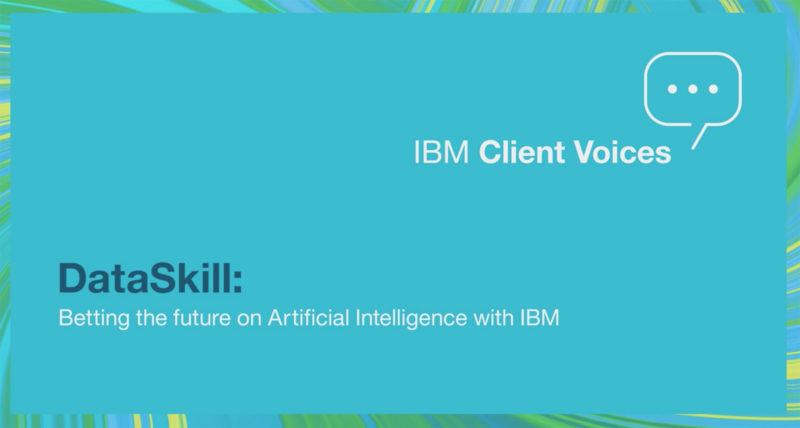We’re all familiar with Hollywood’s sensational portrayal of artificial intelligence as machines taking over the world. But AI today is about practical solutions to real problems in many industries, including healthcare, telecommunications, finance and even ocean powerboat racing.
That’s why, five years ago, we at DataSkill bet the company on AI.
We did it because computing power, networking and software capabilities were coming together to enable things never before possible, and because we enjoy taking the lead in innovative solutions.
Practical value from unstructured data
AI, machine learning and the Internet of Things (IoT) aren’t just shiny new technologies. They represent a quantum shift in computing, as when we went from landlines and rotary phones to smart phones. It’s that significant.
The last few generations of computing have automated management of structured data to create processes that made companies more efficient. Typically, however, just 20 percent of enterprise data is structured. Next-generation solutions, and this is highly practical, are using predictive analytics to capitalize on the 80 percent of untapped unstructured data.
Social media data, cell phone data, maintenance records, handwritten notes, speech-to-text transcripts, emails, research papers, IoT sensor readings, call center logs, sentiment analysis—we can capture such data, apply machine learning to analyze it from the perspective of an expert knowledge worker, and scale the solution to handle the enormous volume. The result helps users make better decisions.
With IBM as our partner with its Watson, analytics and cloud technologies, and Ingram Micro for technology distribution, we specialize in harvesting data and transforming it into value. In other words, we make the solutions work.
Examples of AI at work
Here are some examples of practical solutions made possible by AI technology.
In healthcare, AI can help to automate clinical diagnoses. Through expert analysis of unstructured information from patient medical records, doctors’ notes, lab tests and clinical research, our AI solution helps to identify whether a chronic disease diagnosis is true or false. It’s a huge breakthrough for a computer to do that, instead of mainly relying on human intuition. And AI brings respect and humanity to healthcare by giving doctors every advantage in treating the unique individuals in their care.
AI can help telecommunications companies improve customer service–imagine the advantage if they had insights into customers’ issues before they even picked up the phone. Sentiment analysis of social media, call center logs and other text sources can accomplish this by drilling into the content and context of people’s words. Understanding what they’re likely to ask can genuinely help to improve the service.
Consider this example from trade finance processing, where an international bank could have 300 analysts reviewing shipping documents, bills of lading, regulatory requirements, legal briefs, security threats and other information to maximize profits and minimize risk. An AI solution trained to absorb the experts’ knowledge can analyze transactions to ensure a trade is legal and in compliance with regulations. A computer complementing the work of a team of analysts can change the game in trade finance.
In ocean powerboat racing, the goal is to zoom across the water as fast and as safely as possible. A cloud-based IoT and analytic solution can collect real-time data about the engines’ performance, the course, the weather, the sea state and the pilots’ vital signs, and combine it with historical maintenance records to predict problems in the making. The solution also recommends fixes by converting text alerts to speech and communicating them to the pilots’ headsets.
Solving the practical problems
Developing such solutions does present challenges. Technology-wise, it can be tricky to interpret mechanical signals for the IoT and communications can also be difficult. But the key challenge is integration, choosing the best AI software along with the best networking, processing and communication devices, and integrating them all into a working solution.
Another challenge is knowledge. Although AI has been around since the 1950s, building a team with deep knowledge of data science and cognitive algorithms is new. The worldwide demand is strong for experts able to teach computers what they need to know.
For CEOs and COOs wanting to apply AI to their situations, there’s a singular challenge: which problem to solve? My advice is to keep it practical by identifying a pressing, quantifiable pain point. It’s easy to get off track by falling in love with a technology before you know where to apply it.
AI is the next wave of computer automation, but you need clarity on what it can do for you. Starting with an urgent problem and then pursuing a technology solution gives you the best chance of success.
